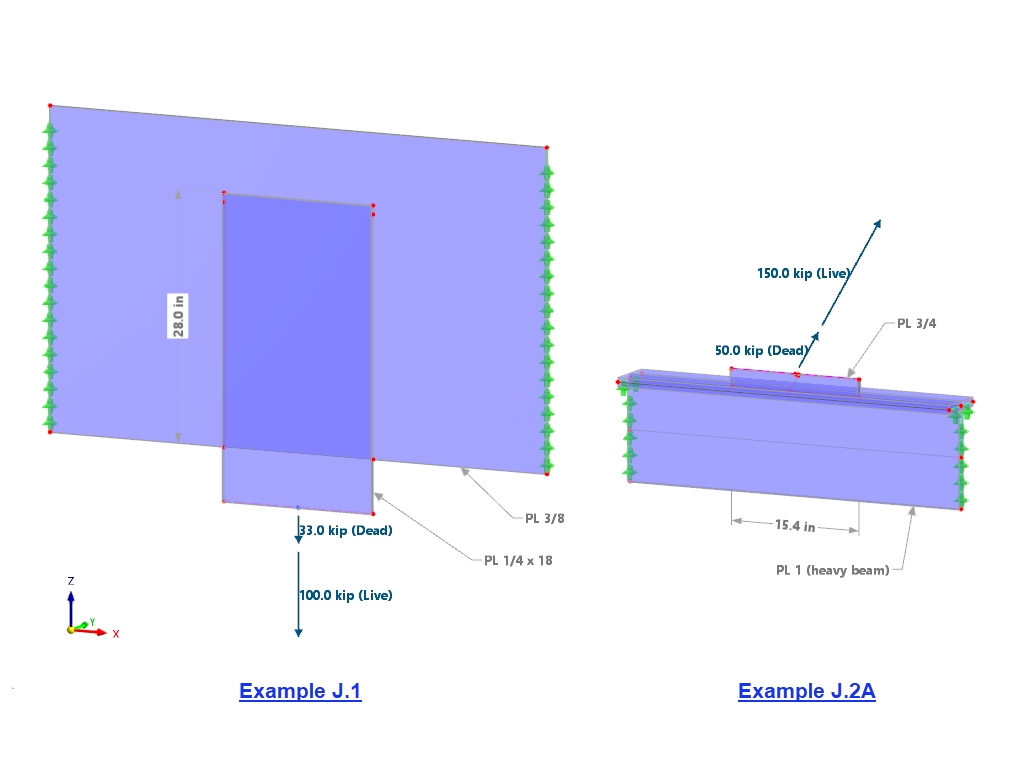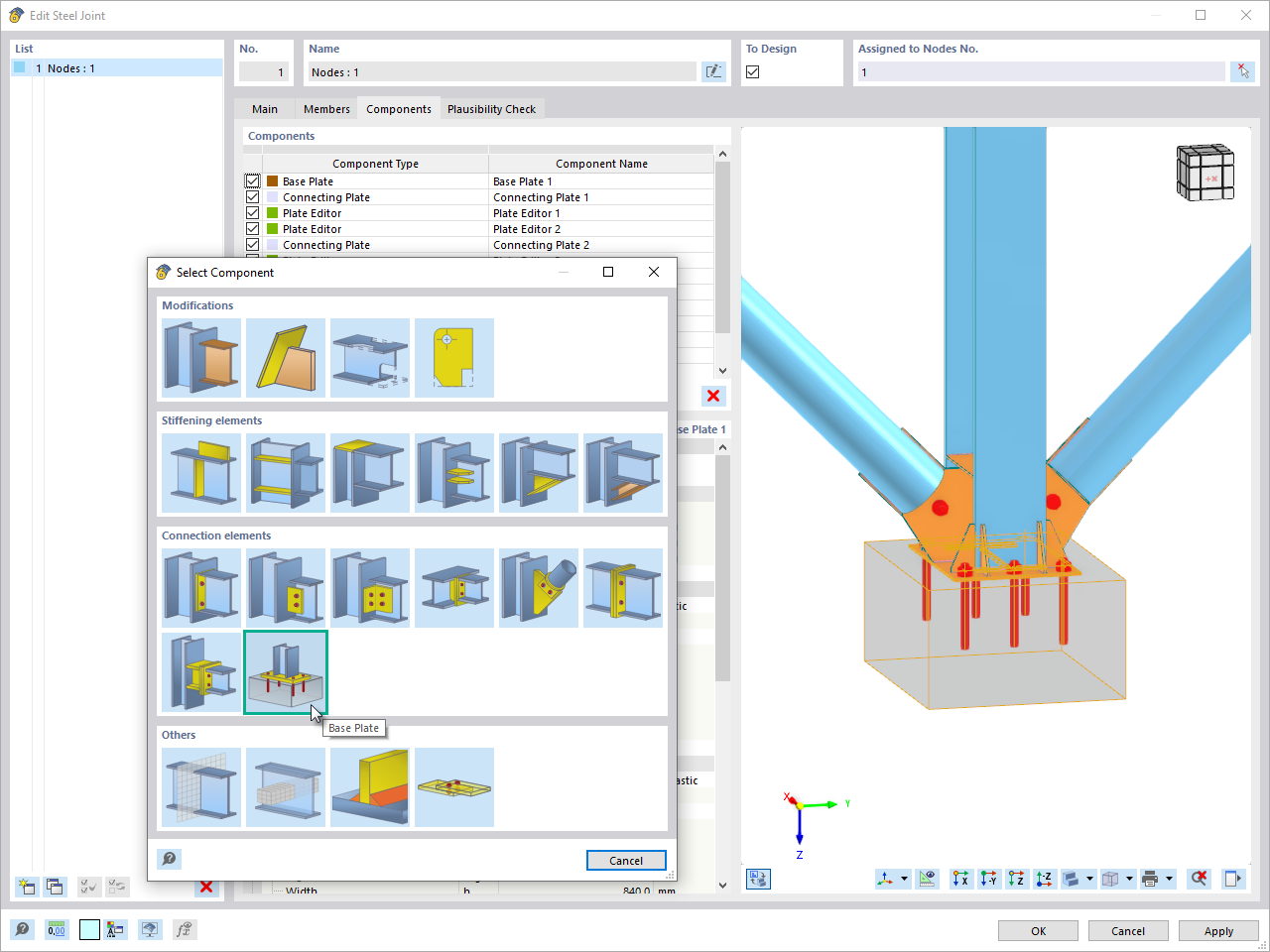A Coupling member is a virtual member with definable rigid or hinged properties. There are four options available to couple the start and end nodes. The axial and shear forces or torsion and bending moments are directly transferred from node to node. The couplings allow you to model special situations for the force and moment transmission.
When specifying Dummy Rigid as a description of the cross-section, you can use a member with a high degree of stiffness, taking into account releases or other member properties. In RFEM 5 and RSTAB 8, Dummy Rigid was replaced by the Rigid member. However, for compatibility reasons, it is still possible to use Dummy Rigid.
The stiffnesses in these members are calculated in relation to the member length L:
- EAx = GIx = 1013 ⋅ L
- EIy = EIz = 1013 ⋅ L3
- GAy = GAz = 1015 ⋅ L (RFEM) or GAy = GAz = 0 (RSTAB)
where
EAx is the strain stiffness,
GIx is the torsional stiffness,
EI is the bending stiffness,
GA is the shear stiffness.
















.png?mw=350&hash=c6c25b135ffd26af9cd48d77813d2ba5853f936c)






Dlubal_KohlA_]_LI.jpg?mw=350&hash=21d94ec9a723c608496e9e95a21bb1309ab5067a)
www.isen_LI.jpg?mw=350&hash=884ca7c4739fd5d2643994f417a345f17b1e1fad)




.png?mw=350&hash=16c8ac08f9bb0385a388c94fe7b6fd2c8c003c3e)



.png?mw=512&hash=4a84cbc5b1eacf1afb4217e8e43c5cb50ed8d827)



















_1.jpg?mw=350&hash=ab2086621f4e50c8c8fb8f3c211a22bc246e0552)



